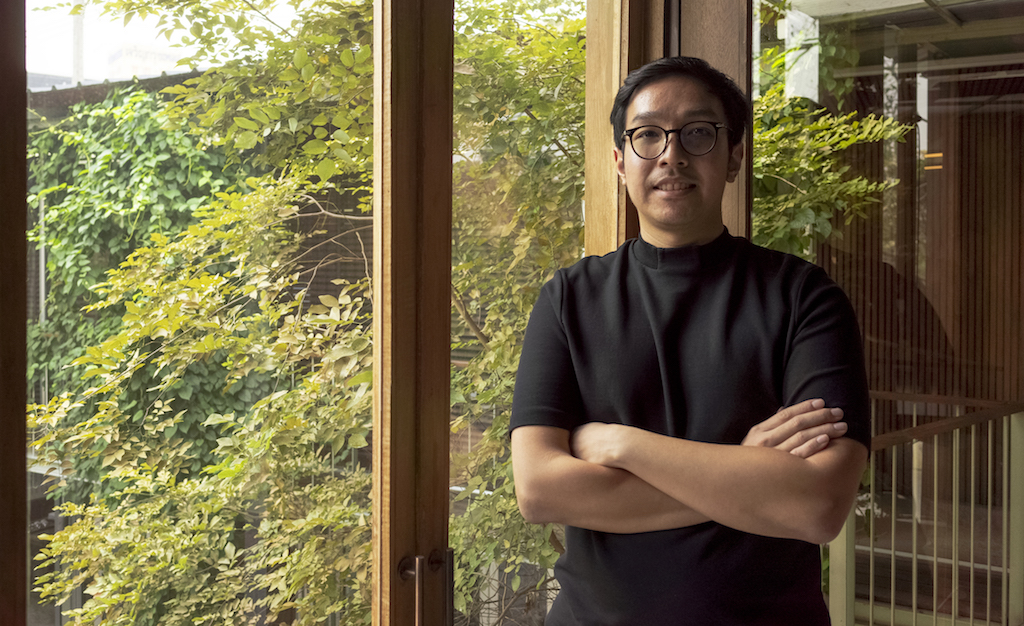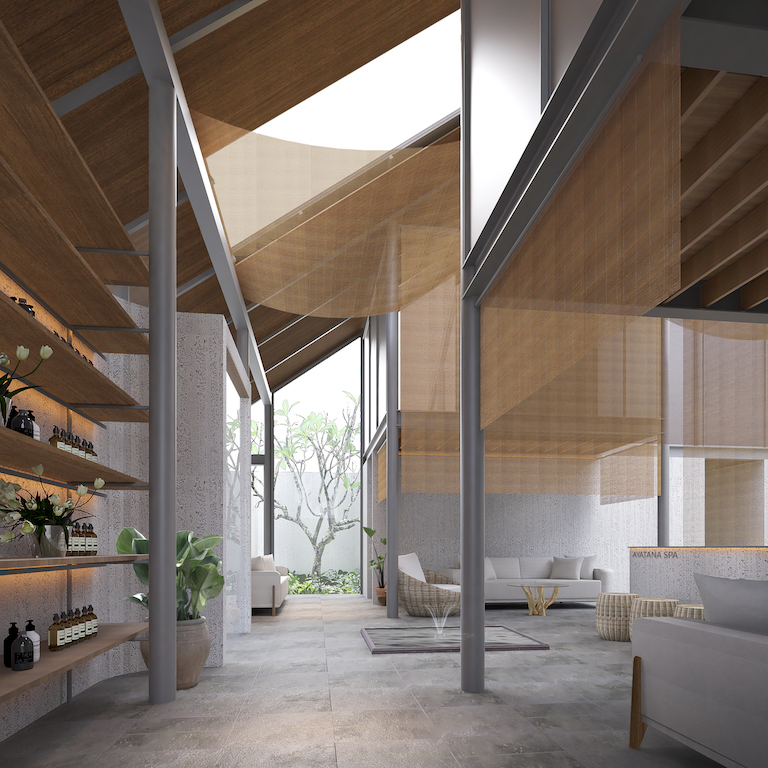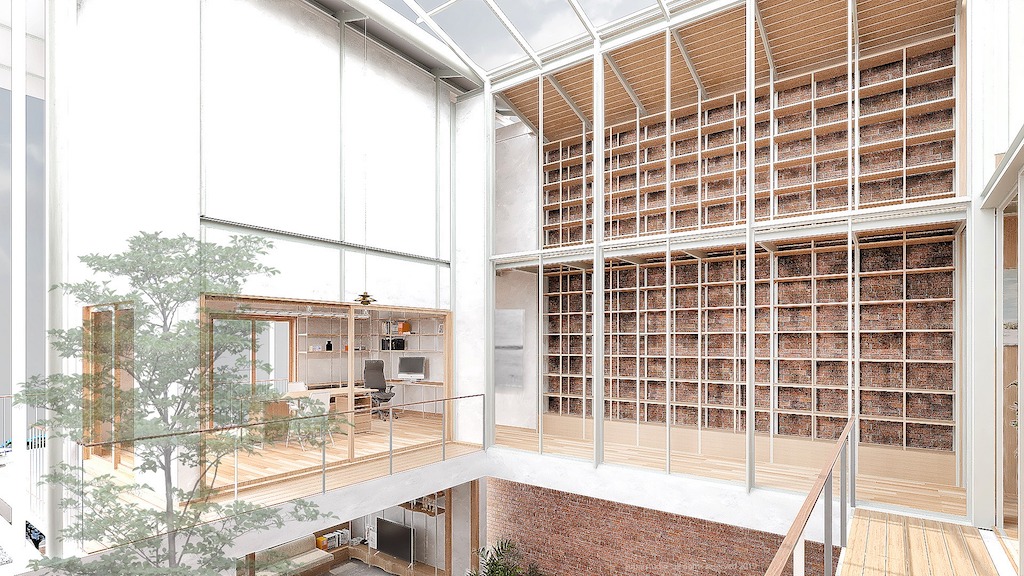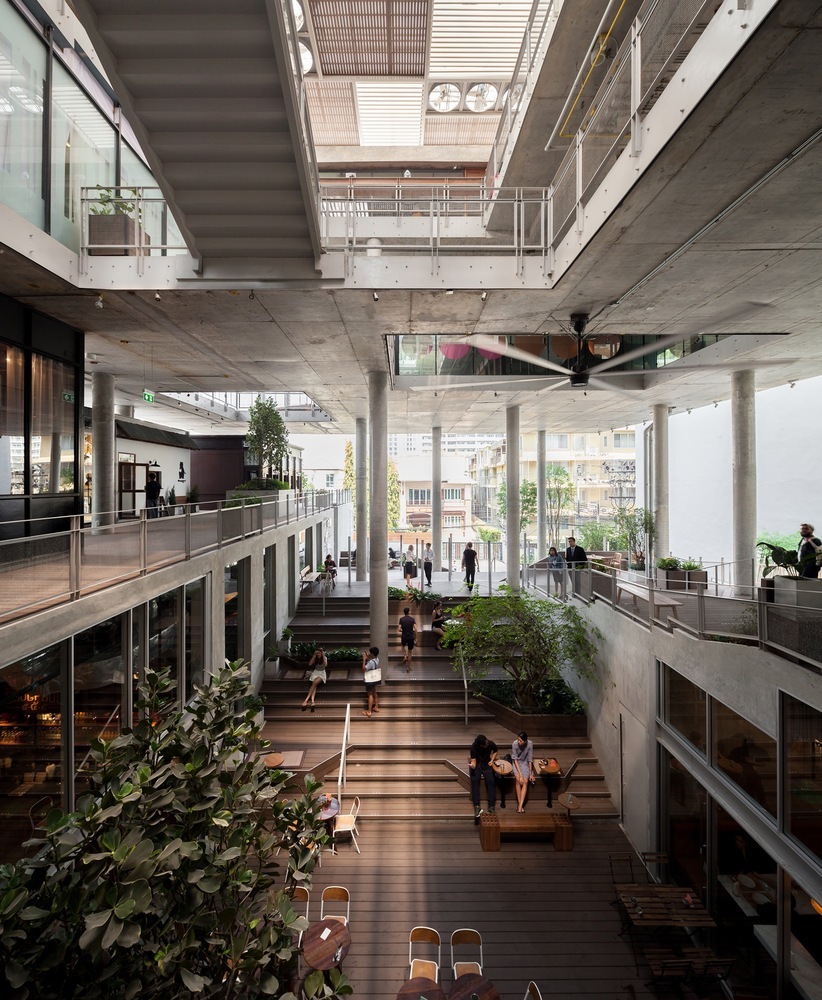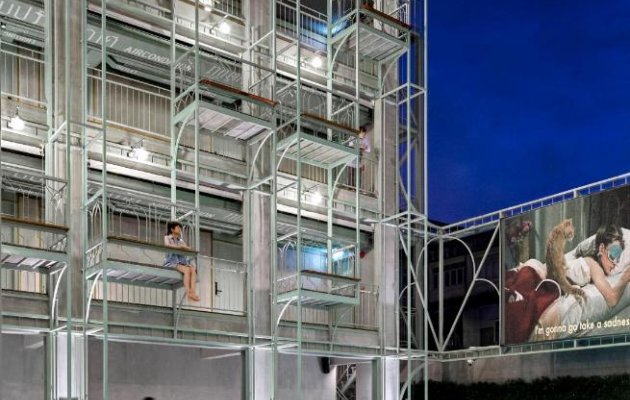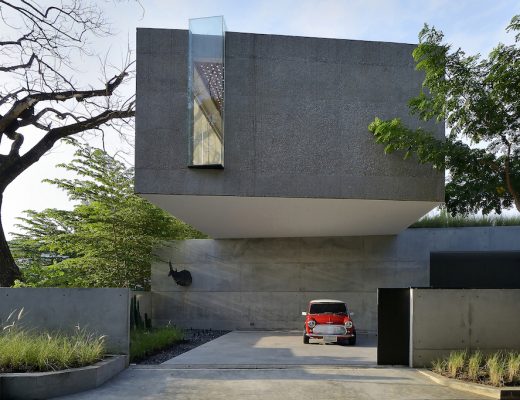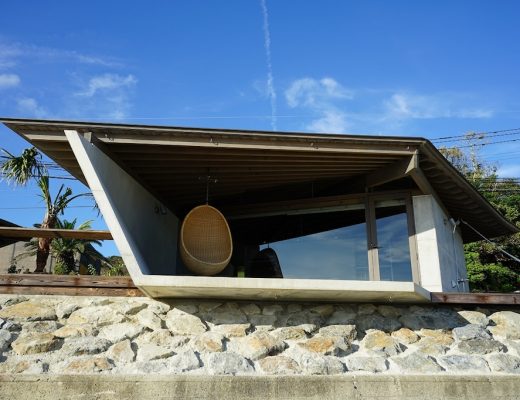Founded in 2019 by architect Suvapat Chooduang, Supar Studio is an up-and-coming architectural practice based in Thailand’s capital Bangkok which is now facing the environmental consequences of rampant urbanisation. Having studied architecture at King Mongkut’s University of Technology Thonburi’s School of Architecture and Design as well as the Glenn Murcutt International Masterclass in Sydney, Chooduang joined a team of vernacular architecture researchers in his native Thailand during which time he travelled with the team to different provinces in Thailand to observe, study, and understand how the local environment and landscape affect the architecture in the area.
Chooduang has also worked as a volunteer with Agora Architects and a group of international volunteer architects in Mae Sot district in the province of Tak, where he worked on the school plan and residential buildings for immigrants. A big believer in designing buildings that respond to the local context and environment, he has worked on several commercial and residential projects through his expertise in the implementations of special crafting techniques.
In an exclusive interview with DE51GN, Chooduang explains why Bangkok’s built urban environment is heavily affected by its socio-economic-political situation. He also highlights that the city lacks an organisation such as Urban Redevelopment Authority (URA) of Singapore which bridges the forward-thinking vision of the government and the ambitions and requirements of its citizens.
What motivated you to establish your practice?
It happened when I acknowledged that I grew up in a country where one’s quality of life is not as good as it’s supposed to be (ranking worldwide at 133 in 2019 according to Mercer Human Resource Consulting). Looking at the big picture, the gap between the rich and the poor is vast. The well offs are 10.3 times richer than the poor (according to the statistics by the Bank of Thailand).
From this information, it simply means that we are living lower than the supposed quality of life when compared to a developed country. This large gap of inequality does not derive only from economic issues within the country but also from the lack of knowledge on how to manage the resources of our country. The lack of good management on the part of the government is also part of the reason for the wide gap.
If we truly look deep down to the roots of Thailand’s history, we will be able to see that we also lack knowledge. For example, the knowledge of gardening like those of the Japanese and Chinese. We lack knowledge about how to properly use a space and the serenity that comes with it. We have no clue about how to manage our environment like other countries. We are not sensitive enough about the state of our social status, and so does the government.
I realised that we need to take action. We can start with what we are interested in, and for me, it’s architecture. Even if it’s just a small part, we are doing something to solve inequalities and all of the problems that derived from it. I believe that one day we will be able to move from small projects to a project that can truly impact everyone’s lives. I want to make Thailand a better country to live in.
How would you say your practice is distinct from the other firms in Thailand?
We are a studio that wants to work on projects that are sensitive to humans and the environment. Projects that we are currently working on are taking us on a deep dive into the relationships between people and their surroundings. For example, an international nursery school with an open-ended playground is a space that incorporates nature into the playground to enhance children’s development. A spa that heightens one’s sensitivity to create a relaxed state of mind. A project that builds houses to help restore the forest. Creating a retail commercial with the community park the size of 1 acre along with SHMA landscape architect company with similar passion to ours.
What makes us different from other companies or studios is our thinking process. We leave the appearance of the buildings as the last step. We are interested in the spirit of the location and the programme of the building. We are curious about how will the project affect the lives of the people who were living in it. How will the building itself change through time and real usage is what we think about.
In such cases, the end result does not always stand out. But what’s interesting comes from aspects centered on how the building is fused together with the community without any restraints that were set before the commission. The environment and surroundings shall be the ones defining the appearance of the building, by putting together each element so that they work together harmoniously. We will then have a building that its occupants can make the most use of as a result. This is how we are different from older studios or offices today who usually focus on how to “be Thai”, or immersing themselves in the appearance of the building.
Some focus on keywords like ‘eco’, ‘energy-saving’, or other marketing strategies such as ‘for a better life’, ‘the life you have always wanted’, and more. When they are stuck on one idea or one word, they have now limited and forced themselves to follow that direction. In the end, due to this, we end up with a design that is just hollow, pretty on the outside, empty on the inside.
Unfortunately, we see this a lot in the government and private sector projects that are trying to reflect strongly on culture, tradition, or identities. Then afterward, the forms or decorations of the building will project the conservativeness or just a beautiful facade with an empty core. If we take a closer look, we will be able to see that this way of thinking and working leads to a decrease in the importance of usage and the value of the relationship between people and their surroundings. It is when designing becomes the solution to marketing schemes.
Sadly, 95% of the buildings in Thailand fall into this category. You will be able to see stunning gardens when you enter five-star hotels or a house that has large spacious land. However, it is not common in Thailand, and even harder to find in temples in Bangkok. That is the main reason why we want to work in the opposite direction.
In our design work, we cut out all of these things so that we are left with the heart of the project. We will be able to work with the language of the structures that we meticulously design so that elegance works harmoniously with function. We are able to witness this unity between the usage, humanity, and the environment. Doing this will emphasise the relationship and make it more distinct.
All of our work fuses ideas from the interior, architecture, and landscaping into one. We think holistically. We design from the inside out as well as from the outside to the inside. We think that in urban society, or any other society for that matter, having a neighbourhood is what brings a little bit of the outside into the inside and vice versa. If everyone follows this way of thinking, we believe that the community will be even more pleasant to live in. This is because there are no boundaries.
What are some of the most socio-cultural challenges in Thailand which architects can help address through the built environment?
In Thailand’s context, I think that we have a lot of talented architects. However, they do not wish to go against the authorities and those with jurisdictional power in deciding public projects to contribute to a better quality of life for the urban society.
I consider myself one of the new generations of architects and if I wish to be in that position, it is extremely difficult. Today, Singapore has a department like the URA that guides and gives directions on development with a forward-thinking vision. Such departments like the URA open up more opportunities for architects to work on developing their city and raise the standard of living.
Looking back at Thailand, our Public Work Department and city-plan have an enormous ripple effect on Thailand’s environment. Furthermore, the Public Work Department works under the Ministry of Interior, which prioritises governance over the quality of life.
These government sectors sometimes host and design buildings and public areas. They leave very little chance for Thai architects to contribute. We barely have creative spaces spread over the country. If you see any famous Thai architects, their works are usually hotels, condominiums, or big shopping malls. They barely get the chance to design a public library, an art gallery in the city, or develop a project that has a long term impact in a vast area for the people and the country.
The government sector’s vision is the key that will pave the way for continuous change and development with tangible results. This is why I think Thai architects are capable of big changes. We architects should work with the government sectors, help them see the potential and possibilities; work together so that when the opportunity arises, we are able to fix problems, make changes, and move forward.
The advancement of architecture in Thailand will shift to an even faster speed. Architecture students will get the opportunity to design areas or buildings that will raise people’s quality of life. We will be able to communicate better, solve problems better, and decrease the gap in society.
Bangkok is a dense, vibrant city. How would you describe the current wave of architecture in the city? What can be changed or improved?
Since Bangkok is densely populated, and as we already know, there’s a problem in managing the relationship of the people with their surroundings. When the surroundings are in a bad condition or quality of the area is below standards, problems follow. Everyone will try to save themselves. The next thing you see is fences and gates with a little patch of green area within each wall. Everything else, such as the roads surrounding these gated houses, are pretty much lifeless.
Looking deeper into the inner areas of Bangkok, areas that are densely populated like Charoen Krung, Silom, Chinatown, or Sukhumvit are full of buildings with a large number of individual rooms. And because of these buildings, it is difficult to dismantle in order to manage space efficiently. Plus, each room has different owners, making things more complicated. However, the perimeter of these buildings comes very near to public areas, making people’s lives a lot closer to the urban community outside their doors.
All of what I have mentioned has everything to do with boundaries. The key is to keep in mind while designing in Bangkok is to not view the boundary lines of buildings as it is but as something that binds the city and its buildings together. Therefore, what I and many architects are interested in, in the context of Bangkok, is the area where the boundary lines of the buildings meet the public areas, such as the space where the edge of the building meets the street.
We try our best in this small role that we have. Buildings like these do not only try to be creative behind its doors but also add value to the public areas. The goal of many Thai architects is to improve the quality of life or improve the relationship between neighbours. We want to establish a lively community in between these boundaries aside from what already exists inside the lines. This starts with a high density and chaotic city like Bangkok.
I like what Anne Lacaton, a French architect, said in the interview with a Louisiana Channel, “The connection between people and the city doesn’t happen when we walk out of our houses. But it begins from inside our houses.” If everyone tries to aim their design towards this direction, each and every unit that we design in Bangkok will connect and form places with high quality of life for the people.
“We barely have creative spaces spread over the country. If you see any famous Thai architects, their works are usually hotels, condominiums, or big shopping malls. They barely get the chance to design a public library, an art gallery in the city, or develop a project that has a long term impact in a vast area for the people and the country.” – Suvapat Choodouang, founder, Supar Studio
Which are your favorite buildings in Bangkok?
The building that I like the most is the building that does its job well but also raises the dimension of its surroundings. Or there could be buildings that understand what its occupants need, turn into the occupants’ memories, and be a part of their lives.
The buildings that fit the description above are probably The Commons by the studio Department of Architecture. It is a community mall that comes with a public space that flows through every floor. This incorporation of public space into each floor of the building brings life back on to every floor. People enjoy meeting their friends at The Commons, sit, chat and chill in the public space.
The Samsen Street Hotel design by a professor and employer I highly respect, Chatpong Chuenrudeemol of Chat Architects is another building that I like. He transformed an old motel into a hotel with a semi-hostel function. Inside, the boundaries were designed so that the street food carts can enter. There’s space for parties and other activities as well.
Are architects in Thailand using local materials sufficiently? Are there any artisanal elements that architects are still using in their projects?
We have knowledge of using local materials and incorporate them into architecture. Before we were influenced by the use of bricks and concrete from other countries, our main choice of building material was wood. This is because our climate is hot and humid. Wood was easy to find and the local people are very skilled in using wood to build houses. We also use clay and nipa palm leaves for roofing. All of these materials were used to build houses without the use of a single nail. That is the intriguing knowledge of our artisans.
Modern Thai architects also know how to use wood, whether its bamboo or teak along with techniques that were passed on from our ancestors. Nowadays wood is also used as decorative materials in many hotels, resorts, and modern houses.
The use of wood is still being studied and researched comprehensively within our local universities. The outstanding North Forest Studio led by Chulaporn Nantapanich, a local architect and professor in Chiangmai investigates the ways of the ancient northern tribe then reapplies it. He mentioned that there are various names for different ways that you use certain tools and other local knowledge. For example, using an axe as the main instrument can mean that a villager can build a home by using just an axe in their hands which is really interesting!
For me, I am interested in the structure of the materials. The fact that we use wood while having a hot and humid climate leads us to be creative, which then leads us to intriguing elements to build houses. Looking at prefabricated wooden walls (Fa-pa-kon), how they interlock when assembled together to build a home, we can see the patterns of the wood. Each natural line represents its journey before it becomes a part of our life.

